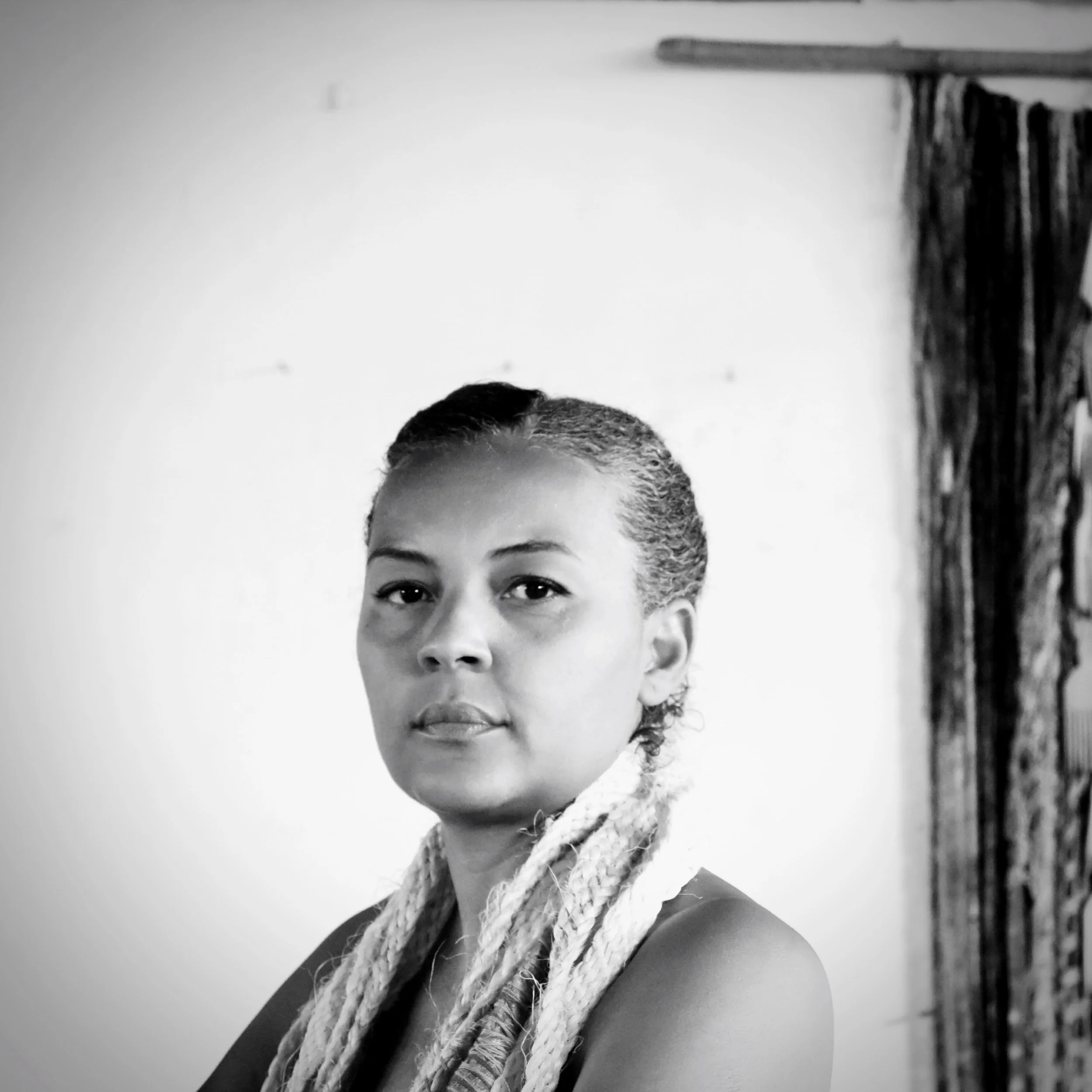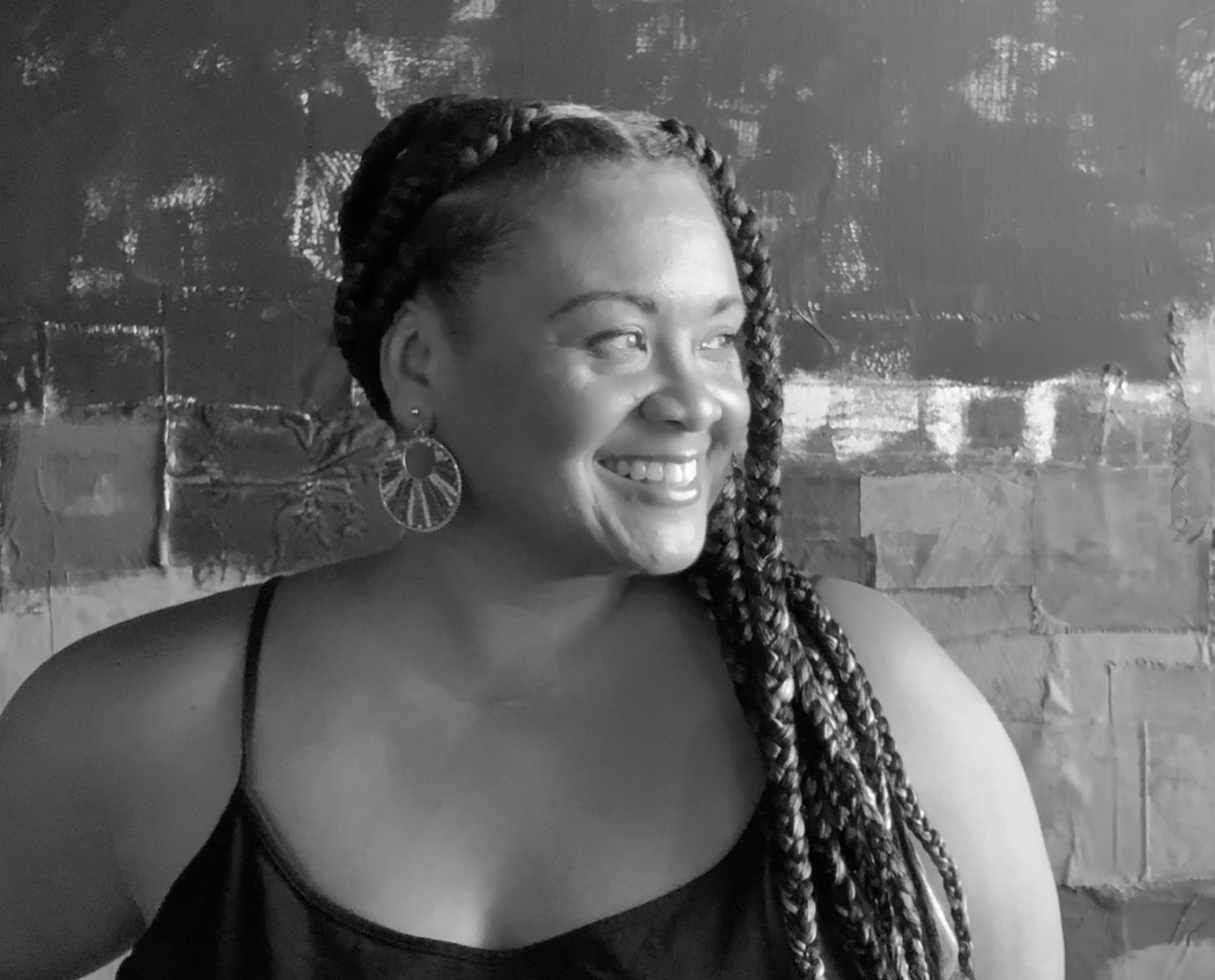Art as a weapon ~ MALIZA KIASUWA
Photo by Jarrett Hendrix
Morton Fine Art is pleased to present Art as a weapon, an exhibition of mixed-media collage and sculpture by artist Maliza Kiasuwa. At once reflecting contemporary globalization and reinvesting in traditional object-based animism, Kiasuwa’s practice continues to expand in the years following her decisive move into paper-based collage. The artist’s second solo exhibition with the gallery, Art as a weapon will be on view through July 25.
Interview by Isabel Hou
Your new exhibition, titled Art as a weapon, is described as creating “totems of mixed meaning out of everyday objects.” Could you elaborate on the significance of this title and how it relates to your artistic practice and the themes explored in the exhibition?
The main inspiration for my work is the mysticism that has always been around me, whether the Orthodox icons that my mother stuffed in our luggage or the animist convictions of my father, which are omnipresent in Congolese culture. Totems and saints can protect or kill, like shields and spears. My creations give soul and powers to the animated objects and materials that I come across during my daily strolls.
Talisman 1, 2023, 16.5 x 12.5 in., Collage on paper
Your practice blends locally available materials with cultural referents. How do you choose the materials and cultural elements you incorporate into your artwork? How do they contribute to the overall message or narrative you aim to convey?
I am not sure if I choose materials or if they choose me. I don’t look for anything specific, I just come across stuff that inspires me. It can be luffa sold at African markets as sponges, pipes for electric cables left over in a construction site, or a beautifully crafted bird nest fallen on the ground. The overall message is that of “anima”, the energy that lives in every one of God's or man’s creations. By weaving them together, by mixing products of nature with manufactured objects, I simply reveal their soul. Art is everywhere, it is just a matter of seeing it.
Talisman 2, 2023, 16.5 x 12.5 in., Collage on paper
In your transition from found objects to paper-based collage, you describe it as a stylistic breakthrough. Could you discuss the significance of this shift and how it has unlocked new possibilities for your artistic expression?
My artistic evolution is not linear, and, to tell the truth, I resist the trend of putting artists in a box by limiting them to a specific approach or medium. I’ve made collages before and regularly return back to them. I make wool sculptures, I had a period of dry pastel and geometric abstraction, and, every now and then, I force myself to go back to acrylic painting. I am naturally creative, so maybe the only constant in my production is that while the medium may change, the thematics always drive me back to the power of mysticism.
Talisman 3, 2023, 16.5 x 12.5 in., Collage on paper
Your Congolese-Romanian heritage and experience of living between Africa and Europe has certainly influenced your artistic practice. How do these diverse cultural influences manifest in your work, particularly in relation to the “fusion of Christianity and animism”?
There is something schizophrenic about dealing with a Congolese and Romanian heritage: the former are a joyous, hedonistic people with incredible energy, the latter are a melancholic, hard-working people moved by an outstanding capacity for resilience. Both have deep respect for superior forces and seek their favors through mystic rituals. I guess all of these cultural traits can be found in my art, which is a métissage of Central European gravity and African lightness.
Talisman 4, 2023, 16.5 x 12.5 in., Collage on paper
The press release mentions the talismanic qualities of everyday objects and the contrast between natural beauty and human intervention— I found that to be a particularly beautiful line. Could you elaborate on how these themes are explored in your artwork and how they contribute to the sense of power and multiple interpretations within your totemic arrangements?
Thank you for the compliment! If my artwork can convey this very message without explanations, I feel that I have achieved my objective. I aim at stitching and gluing objects and fabrics together that would not convey any emotions per se, but that express the power of nature, craft, and cosmic energy once assembled.
Talisman 5, 2023, 16.5 x 12.5 in., Collage on paper
The "Talisman" series in your exhibition references the conflict surrounding Lake Naivasha and its impact on the local community. How do you approach incorporating sociopolitical issues into your artwork? What message do you hope to convey through this specific series?
The Naivasha Lake conflicts pitted fishermen, farmers, and hippos against one another, each competing for access to land and water. The trigger for the violence has been rising water levels that have encroached on industrial farmland and an increasing number of people entering the fishing trade after many lost their jobs on flower farms during the pandemic. It was in itself a concentration of many familiar African conflicts: access to diminishing natural resources, climate instability, demographic pressure, and social injustice. By using bits and pieces of fishnets, grain bags, and irrigation pipes, I was paying homage to the culture of recycling that is a key part of the disenfranchised masses’ survival strategy.
Talisman 6, 2023, 16.5 x 12.5 in., Collage on paper
The "Intersection" and "Paradox" series in your exhibition feature African masks as visual typologies. How do you navigate the complex history and associations of African masks in your work, particularly in relation to power figures, appropriation, and the exploration of hidden subjectivities?
My creative approach is creative, not conceptual. I instinctively pick up objects and visuals that inspire me without much intellectual consideration. I feel that I am only continuing a tradition of craftwork in Africa and Central Europe that has been shaped by the work of its predecessors, all of them adding their own touch of creativity. Tribal and religious arts are a common good to humanity; there cannot be any appropriation if the artist is sincere and listens to his or her heart.
Intersection 1, 2023, 40 x 27.5 in. Paper and thread
Your artistic process involves reductive methods of shredding and twisting, as well as constructive processes of tying, weaving, stitching, and dyeing. How do these techniques contribute to the overall meaning of your artwork? Do they reflect the meditative aspect of your creative process?
I would say that these techniques reflect respect for the patient work of the hands of all craftspeople, be they carpenters, weavers, or blacksmiths. I create with my hands as much as my soul, and, indeed, spending days on end transforming fabrics keeps your hands just busy enough to have ample headspace for meditation.
Intersection 2, 2023, 40 x 27.5 in. Paper and thread
The press release mentions that you have exhibited your work in various countries. Have you noticed any differences in how your artwork is received and interpreted based on the cultural context or audience? How does this influence your artistic approach, if at all?
I currently have shows running in Uganda, Switzerland, and the United States. I would say that independent from the continent, there are two types of collectors: those who somehow invest in an artist's potential and those who are simply moved by my art. The common denominator is that collectors buy a work of art, but also a story. And their side of the story, their perception allows me to better understand my own art.
Paradoxes 3, 2023, 23 x 16.5 in., Paper and sand paper
Looking forward, how do you envision your artistic practice evolving in the future? Are there any specific themes, techniques, or mediums you would like to explore or incorporate into your work?
I am tempted to craft more multimedia sculptures, and I would like to move away from chemical paints and produce my own colors from natural ingredients. It is a difficult question for me, as I have no idea what will come out of my hands when I arrive in my workshop in the morning, or what I will find along the street on my way there. Strangely enough, I usually realise an evolution in my creation only after completing a series, rather than before. Afterwards, I try to put words to it, and as you can see it is not the best of my skills.
Paradoxes 4, 2023, 23 x 16.5 in., Paper and sand paper
Art as a weapon will be on display through July 25 at Morton Fine Art, by appointment only, 52 O St NW #302, Washington, DC - (202) 628-2787 (call or text), mortonfineart@gmail.com.
Maliza Kiasuwa (b. 1975, Democratic Republic of Congo), is a visual artist of European and African descent. She lives and works in Kenya, where she creates works with stimulating and eclectic elements celebrating Africa’s mystic power of nature by using raw materials and traditional symbols of energy that flow through the veins of the continent. She transforms everyday articles by combining reductive methods of shredding and twisting with constructive processes of tying, weaving, stitching and dyeing. The process is fluid, focused and meditative. Kiasuwa has exhibited in Kenya, Switzerland, Italy, England and the United States.
Isabel Hou is a rising senior at Cornell University interested in art, writing, and law. She plans to live and work in Manhattan this summer and post-grad. When she’s not in New York, she’s based out of Colorado, where she enjoys the mountains, the art, and the solitude.
All images courtesy of the artist and Morton Fine Art
















